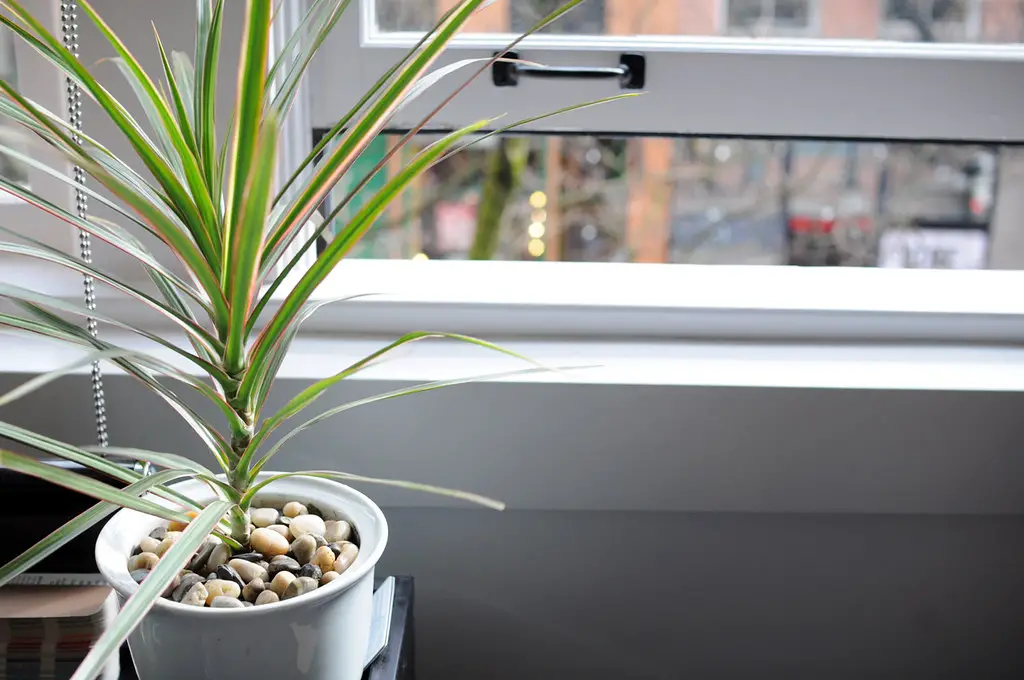The Madagascar Dragon Tree, a dramatic and eye-catching houseplant, is known for its bold, sword-like leaves that are often edged in a vibrant red. These plants can add a tropical flair to indoor settings and are loved by interior designers and homeowners alike.
Native to Madagascar, this tree can grow quite large in the wild but is typically kept to a manageable size in indoor gardens. The Madagascar Dragon Tree is a member of the Dracaena genus, which consists of about 120 different species. This plant is a popular choice due to its relative ease of care and its ability to thrive in various indoor conditions.
Although attractive, the Madagascar Dragon Tree can be toxic to pets if ingested, so it should be placed with care in a home with furry friends. Let’s explore this fascinating plant in greater detail, including its care requirements and potential problems.
| Attribute | Details |
|---|---|
| Common Names | Madagascar Dragon Tree, Dragon Tree |
| Botanical Name | Dracaena marginata |
| Family | Asparagaceae |
| Plant Type | Perennial |
| Mature Size | Up to 6 feet indoors |
| Sun Exposure | Indirect, medium light |
| Soil Type | Well-drained, peat-based mix |
| Hardiness Zones | 10-12 |
| Native Area | Madagascar |
Madagascar Dragon Tree Care
The Madagascar Dragon Tree requires a specific balance of light, water, and soil conditions to thrive. It does well in indirect medium light, and it likes to be kept evenly moist without being soggy. The plant is relatively forgiving and can tolerate some neglect, making it a good choice for busy plant owners or those new to houseplants.
A well-draining, peat-based potting mix is typically recommended for these plants. They benefit from regular but not excessive feeding and should be kept away from direct sunlight, which can scorch their leaves. The attractive red edges of the leaves are more pronounced when the plant receives sufficient light but not direct sun.
Light Requirement for Madagascar Dragon Tree
The Madagascar Dragon Tree prefers indirect, medium light. Bright, direct sunlight can scorch the leaves, but too little light may cause the plant to become leggy and lose its vibrant coloring. A north or east-facing window, protected by a sheer curtain, can provide an ideal lighting situation.
Soil Requirements for Madagascar Dragon Tree
A well-draining, peat-based potting mix is ideal for the Madagascar Dragon Tree. This type of soil will provide the right balance of moisture retention without becoming soggy, a condition that can lead to root rot in these plants.
Water Requirements for Madagascar Dragon Tree
Watering should be done carefully to keep the soil evenly moist but not soggy. Allowing the top inch of soil to dry out between waterings is typically recommended. Overwatering can cause root rot, while underwatering may lead to dry, brown leaf tips.
Temperature and Humidity
These plants prefer temperatures between 65-75°F and a humidity level of around 40-50%. They can tolerate lower humidity levels, but a room humidifier or misting can help keep them looking their best.
Fertilizer
A balanced, water-soluble fertilizer can be applied every six weeks during the growing season to promote healthy growth. Over-fertilizing should be avoided, as it can lead to salt buildup in the soil.
Pruning Madagascar Dragon Tree
Pruning can be done to shape the plant or keep it to a desired size. Removing damaged or dead leaves will keep the plant looking its best.
Propagating Madagascar Dragon Tree
Propagation can be achieved through cuttings. A stem cutting placed in water or soil with proper care will grow into a new plant.
How To Grow Madagascar Dragon Tree From Seed
Growing from seed is possible but can be challenging and time-consuming. Seeds should be sown in a well-draining soil mix and kept at a steady temperature of 70-75°F.
Common Pests & Plant Diseases
Spider Mites
These tiny insects can be controlled with insecticidal soap or neem oil.
Leaf Spot
Caused by a fungus, leaf spot can be prevented by avoiding overhead watering.
Common Problems With Madagascar Dragon Tree
Brown Leaf Tips
This can be a sign of underwatering or low humidity.
Root Rot
Often caused by overwatering, proper watering practices and well-draining soil can prevent this problem.
Pro Tips
- Avoid placing the plant near heating or cooling vents.
- Rotate the plant occasionally to ensure even growth.
- Use filtered water if possible, as these plants can be sensitive to fluoride in tap water.
- Keep out of reach of pets, as the plant can be toxic if ingested.




